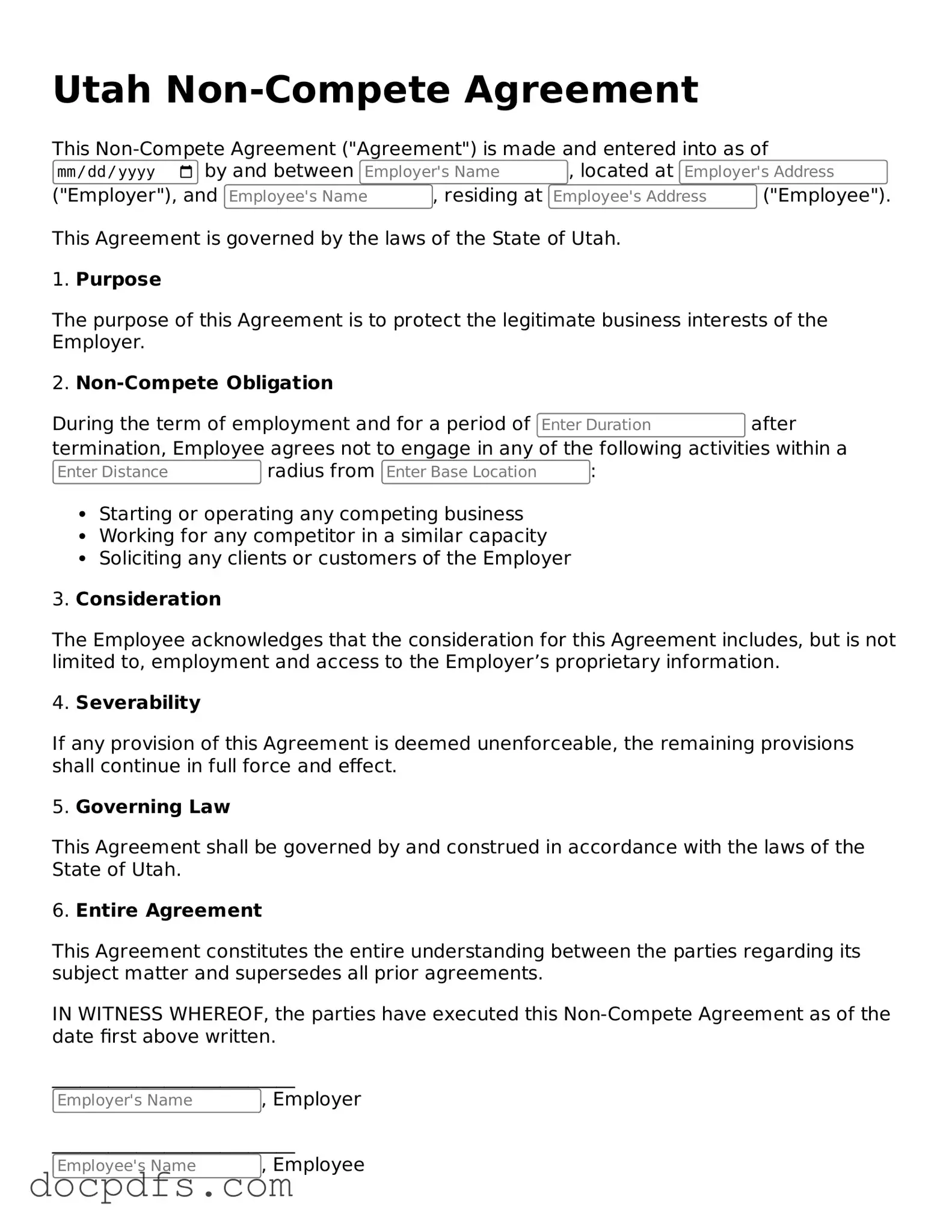What is a Non-compete Agreement in Utah?
A Non-compete Agreement is a legal contract between an employer and an employee. It restricts the employee from working for competitors or starting a competing business for a specified period after leaving the employer. In Utah, these agreements must be reasonable in scope, duration, and geographic area to be enforceable.
What are the key elements of a valid Non-compete Agreement in Utah?
For a Non-compete Agreement to be valid in Utah, it should include:
-
Clear identification of the parties involved.
-
A reasonable duration for the restrictions.
-
A defined geographic area where the restrictions apply.
-
Consideration, such as compensation or benefits, provided to the employee in exchange for signing the agreement.
How long can a Non-compete Agreement last in Utah?
The duration of a Non-compete Agreement in Utah should be reasonable, typically ranging from six months to two years. However, the specific time frame can vary based on the industry and the nature of the work involved. Courts may invalidate agreements that impose overly long restrictions.
Are there any restrictions on the geographic area covered by a Non-compete Agreement?
Yes, the geographic area must be reasonable and not overly broad. For example, if an employee works in a specific city, the agreement should ideally limit competition to that city or surrounding areas. Courts will assess whether the area is necessary to protect the employer's legitimate business interests.
Can an employee negotiate the terms of a Non-compete Agreement?
Absolutely. Employees have the right to negotiate the terms of a Non-compete Agreement before signing. It’s important to discuss any concerns regarding duration, geographic scope, or other provisions. Open communication can lead to a more balanced agreement that protects both parties.
What happens if a Non-compete Agreement is violated?
If an employee violates a Non-compete Agreement, the employer may take legal action. This could involve seeking an injunction to prevent the employee from continuing to work for a competitor or pursuing damages for any losses incurred due to the violation. The outcome often depends on the agreement's enforceability and the specific circumstances of the case.
Are there any exceptions to the enforceability of Non-compete Agreements in Utah?
Yes, certain exceptions exist. For instance, Non-compete Agreements may not be enforceable against employees who are laid off or terminated without cause. Additionally, if the agreement is deemed overly restrictive or unreasonable, a court may refuse to enforce it.
Should I consult a lawyer before signing a Non-compete Agreement?
Consulting a lawyer before signing a Non-compete Agreement is highly recommended. A legal professional can help clarify the terms, assess the agreement's fairness, and ensure that your rights are protected. Understanding the implications of the agreement can help you make an informed decision.
